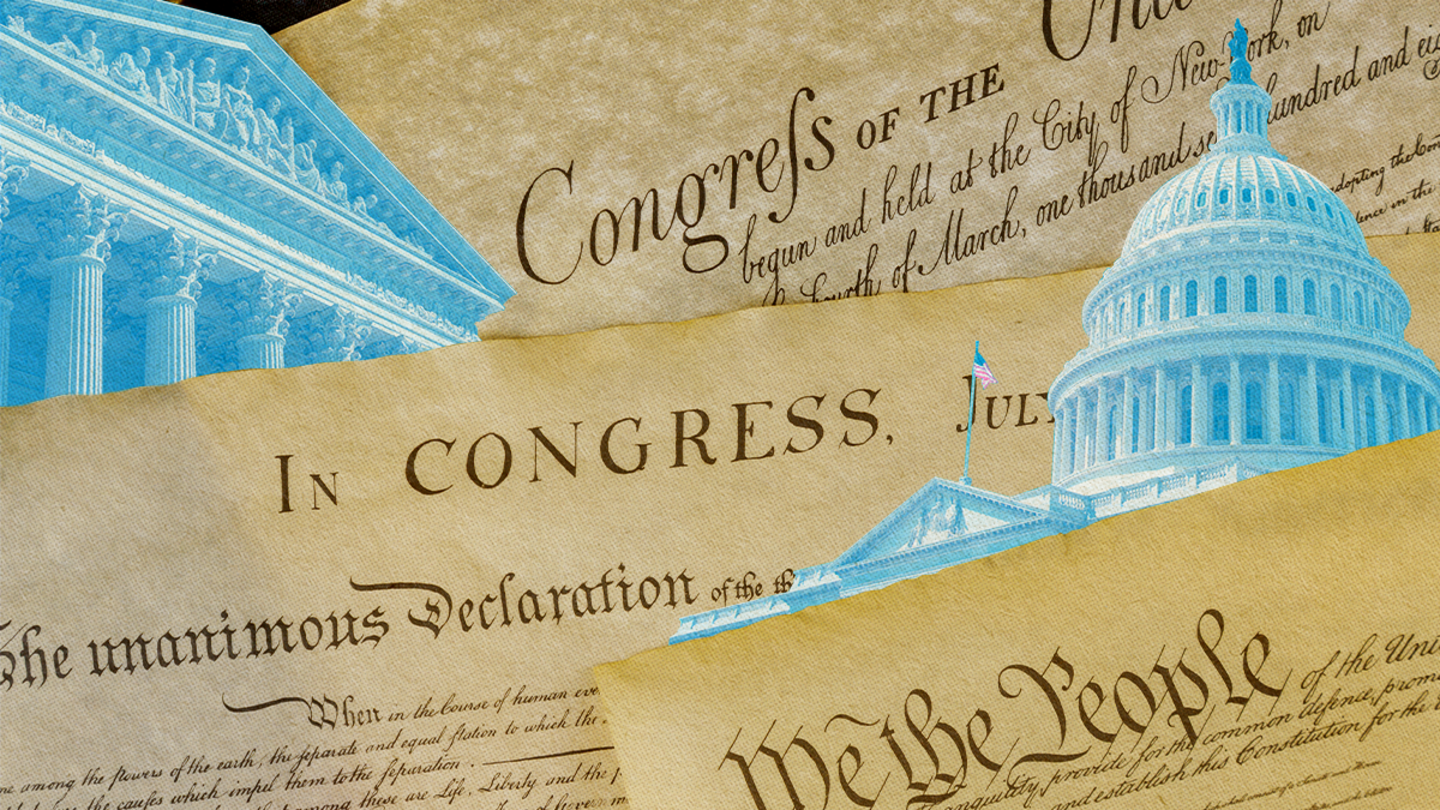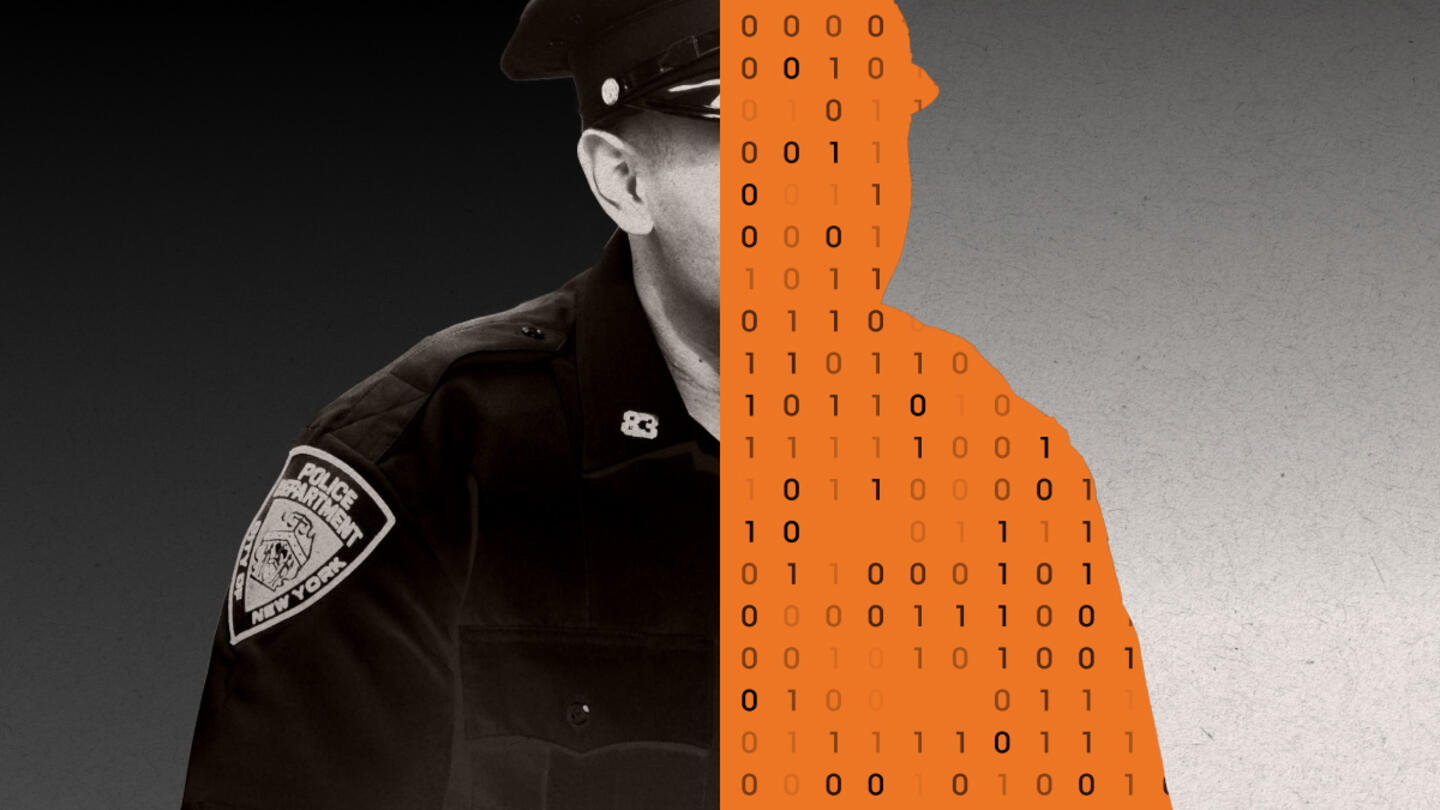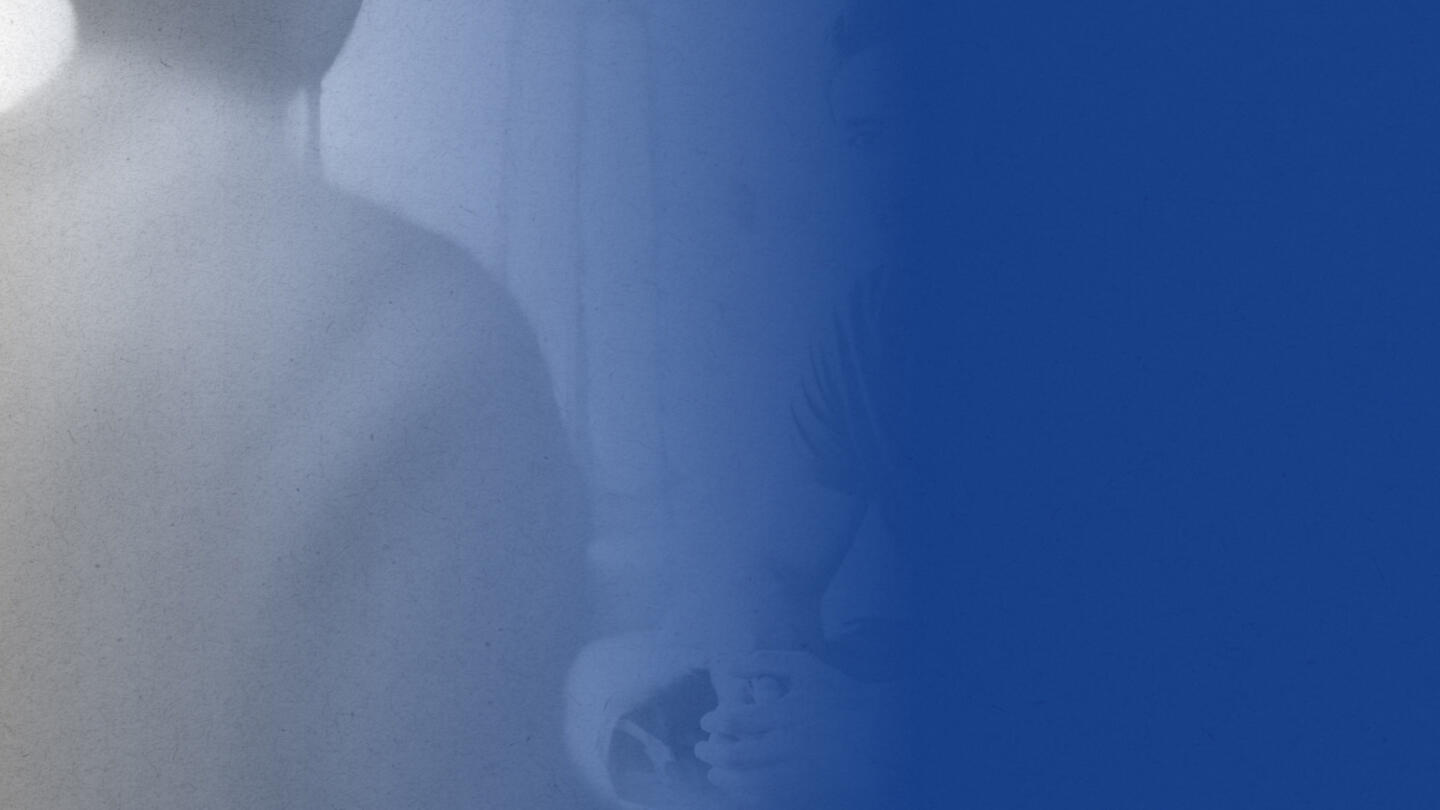America is the most politically divided it has ever been — or is it?
What if everything we think we’ve been seeing over the past few years is wrong? Sean Westwood, director of the Polarization Research Lab — an organization that collects data on American political divides — said there’s a lot more that unites us than divides us.
“This is one of the few moments where I get to be the optimist,” Westwood said. “We’ve seen a lot of fear. We’ve seen a lot of alarmist coverage about the future of democracy. That’s just really not based on data.”
Westwood would know: The PRL harnesses current data to uncover the realities of political polarization in America. Its dashboard tool surveys large groups of Americans and studies our most popular media sources to outline the true causes and extent of political animosity.
And those facts are encouraging. According to PRL’s research, despite what we may hear on the news, politically motivated violence is not on the rise. Americans remain as supportive of democracy today as they were five years ago — and just as opposed to polarization. Citizens on both sides of the aisle have largely similar views on core American issues, including free speech, immigration, and the economy.
Then why are so many people confused?
“There’s a disconnect between what people are being told by forces in the media and what’s actually going on in the minds of Americans,” Westwood said, noting that many talk show pundits and programs exaggerate and distort conflicts to drive up ratings. “We’ve witnessed a change in government. We’ve witnessed a swap in the party of the presidency and a swap in the party that controls the Senate. That certainly means structural changes, and that certainly means policy changes, but it does not mean that we’re no longer in a democracy.”
Our ability to engage and disagree with each other in healthy ways opens us up to a greater diversity of thought, which has the potential to strengthen our workplaces, health care centers, places of worship, and homes.
“Whether we want to believe this or not, others are judging us based on our partisanship, and we’re judging others based on their partisanship,” Westwood said. “It is not just abstract. It’s not just a world where we might have to question how we view the other side. It really is a part of our day-to-day experience.”
Westwood laid out five questions Americans can ask themselves — whether interacting with someone in their workplace or watching a pundit on television — to move out of extreme, black-and-white thinking and into a world where disagreements can be productive.
1. Am I just having my views questioned, or am I being told what to think?
Remaining open to fair debate is essential for fostering productive disagreement.
While being told what to think is “very much a source of polarization,” having our views questioned is actually “a healthy part of democratic discourse,” Westwood said.
It can be tricky to separate the two. An example of being told what to think might sound like, “‘How could you possibly believe that we should allow immigrants into this country?’” Westwood explained. “That’s someone telling you that you’re wrong without facilitating any room for you to have a rational discussion.”
A more open approach may sound something like, “I don’t think immigrants should be allowed into this country, but you disagree. Why do you disagree?” This framework leaves the door open for both sides to present their views, ask questions, and choose to agree or disagree.
When someone outright dismisses our beliefs, as in the earlier scenario, it can be tempting to avoid engaging with them altogether. Westwood conceded that “it’s important to be able to say, ‘If this is not going to be a healthy conversation for me, it might not be worth my effort.’ It might be okay to walk away from the discussion or talk about something else.”
However, he encouraged Americans to try and redirect the discussion in a way that allows both sides to learn.
“If you’re truly trying to become a better citizen, I think the pivot is to try and explore why that person thinks the way they do,” he said. “Ask for the evidence behind their argument in a very nonconfrontational way. So for some people, the answer is to disengage, but for others, it’s to try and truly understand where this person is coming from in a very respectful way.”
2. Is what the media is saying aligned with my experience in the world?
When listening to talk show hosts, political pundits, and commentators, we have the power to question their views and consider them in light of our own experiences and judgment.
“If someone is telling you that the country is falling apart, that it’s ending, is that reflected in your day-to-day experience?” Westwood said. “If there’s a mismatch between what you’re seeing as a citizen and what you’re being told about America, that’s a strong sign that someone is trying to inflame tensions and perhaps not honestly reflecting the state of American democracy.”
Of course, not all pessimistic opinions are overblown. The key differentiator is whether this type of negativity is “constructive” and “building towards discourse, rather than trying to alarm and inflame tensions.”
It behooves all of us to think critically about the political media we consume, in part because Westwood believes that there is no such thing as a neutral news source. In today’s media landscape, every outlet will have some level of bias.
“It’s a noble but impossible goal to find neutral news,” he said. “The key is to be a critical audience member or a critical reader, to not just accept what you’re being told. To identify the quality of a news outlet or the extent to which you’re getting accurate news is an individual-level task. It’s something that requires thought and effort. Don’t just trust, but also don’t just reject. Be critical.”
Sign up for the Stand Together newsletter and get stories, ideas, and advice from changemakers to help you tackle America’s biggest problems.
3. Is this a conversation where I’m learning or where I’m debating?
The solution to polarization isn’t to achieve uniform, aligned values across the country. Instead, it’s in being able to respect each other’s differing views and discuss them openly.
“America is founded on difference,” Westwood said. “We are a nation that’s built on respecting different religions, different ideological dispositions, different views on important political topics, and it’s potentially dangerous to try and say that disagreement shouldn’t exist.”
Someone having an opposing view isn’t necessarily a threat to you being able to maintain your own. “Recognizing difference doesn’t mean that you need to change your own opinion,” Westwood said.
When engaging with someone they disagree with, Westwood encouraged Americans to see the conversation as an opportunity to exchange ideas, gain insight into a different perspective, and understand the life experiences that shaped it.
In other cases, there can be room for debate. Be open to the possibility that you may change your own mind instead of changing the mind of the person you’re speaking with. Being able to explain and justify each other’s stances in an open, respectful way is the foundation for “how we advance policy discussions,” Westwood said. “That’s how we have been as successful as we have been as a nation. We’re a country that thrives on meaningful disagreement on policy and principled disagreement on policy.”
4. How can we have a conversation that focuses on things that we have in common rather than the things that divide us?
It can be instinctive to focus first on what divides us, but nearly any topic can be pivoted into identifying common values and agreement.
“It’s incredible that we’re able to have these kinds of disagreements in this country,” Westwood said. Underneath these visible disagreements, ultimately, “we’re all Americans. We’re all deeply committed to the principles of this country: to free speech, to free religion, to free thought, to economic enterprise, to prosperity. We may just disagree on how we get to those goals.”
An important starting point is distinguishing between opinions that are formed from someone’s personal experience and those that are more reflective of partisan alignment.
“When you’re talking with someone, are you talking about something that is a core part of their being? Something that they’ve been told from childhood to believe?” Westwood said. “Or is this something that’s perhaps less deeply held, adopted recently for less principled reasons?”
Topics such as gun control, abortion, vaccination, or what’s taught in schools are often related to someone’s childhood, religious upbringing, views of morality, or other personal experiences and are more apt to spark conflict.
However, topics like free markets, free speech, reasonable immigration, or low tax rates are often related to one’s partisan alignment and can be easier to find common ground on.
5. What assumptions am I making about the other side?
We reduce complex perspectives to simplistic stereotypes when we embrace sweeping negative assumptions about people with opposing views. Recognizing this and avoiding absolute thinking can lead to more meaningful and productive conversations.
A warning sign that we might be seeing those across the aisle from us as caricatures is the use of blanket assumptions, Westwood said. “It’s when you assume that everyone in this group is unintelligent — everyone is evil, everyone is immoral, everyone is unpatriotic. There’s just no singular group of Democrats. There’s no singular group of Republicans. If you’re making assumptions that apply to all Democrats and all Republicans, that should be a really big red flag.”
If we recognize ourselves falling into one-dimensional views of others, we should seek conversations that challenge our biases and help us develop a more nuanced understanding of other perspectives.
To do this, Westwood advised thinking about the people we know who hold those opposing viewpoints.
“If you’re assuming the other side is unintelligent, does that belief reflect individuals who hold those views that you know personally?” he said. “If you can think of more examples of people that you talk with day to day who don’t reflect the simplistic model you have of the other side, it might be a sign that your perception is off. It could suggest that you’ve fallen victim to how conflict entrepreneurs in the media want you to think about the other side.” Westwood explained that conflict entrepreneurs often characterize the other side as “the worst possible person in the world.”
Why there is reason for hope
These five questions are far from straightforward, and sometimes we may feel caught in an uphill battle to shake off our prejudices and have a respectful conversation with someone we disagree with politically.
Amid all of this confusion, why should we remain optimistic?
Westwood noted that today’s political polarization is nothing compared to the intensity of the Civil War or the political conflicts of the 1960s. More importantly, we are united far more by our shared values than we are divided by our differences.
“Americans have really strong positive views of America,” Westwood said. “They have confidence in America. They have confidence in American principles. It’s a mistake to assume that where we are today is where we will always be. I’m quite optimistic that what makes our country so strong and what makes our country so great is our respect for our core principles. It’s going to allow us to surmount the challenges that we’re currently facing.”
Put simply?
“Don’t give up on America,” Westwood said. “Don’t succumb to the doom. Base your view of America on what you see day to day, on the interactions that you have with your fellow citizens. We’re going to be okay.”
The Polarization Research Lab is supported by Stand Together Trust, which provides funding and strategic capabilities to innovators, scholars, and social entrepreneurs to develop new and better ways to tackle America’s biggest problems.
Learn more about the Stand Together community’s constitutionally limited government efforts, and explore ways you can partner with us.

A landmark Supreme Court decision is bringing a return to federalism.

How the Supreme Court decision affects Congress’ job.

How to maximize new innovations to keep communities safe.

This federal agency is leaving one business in legal limbo.
